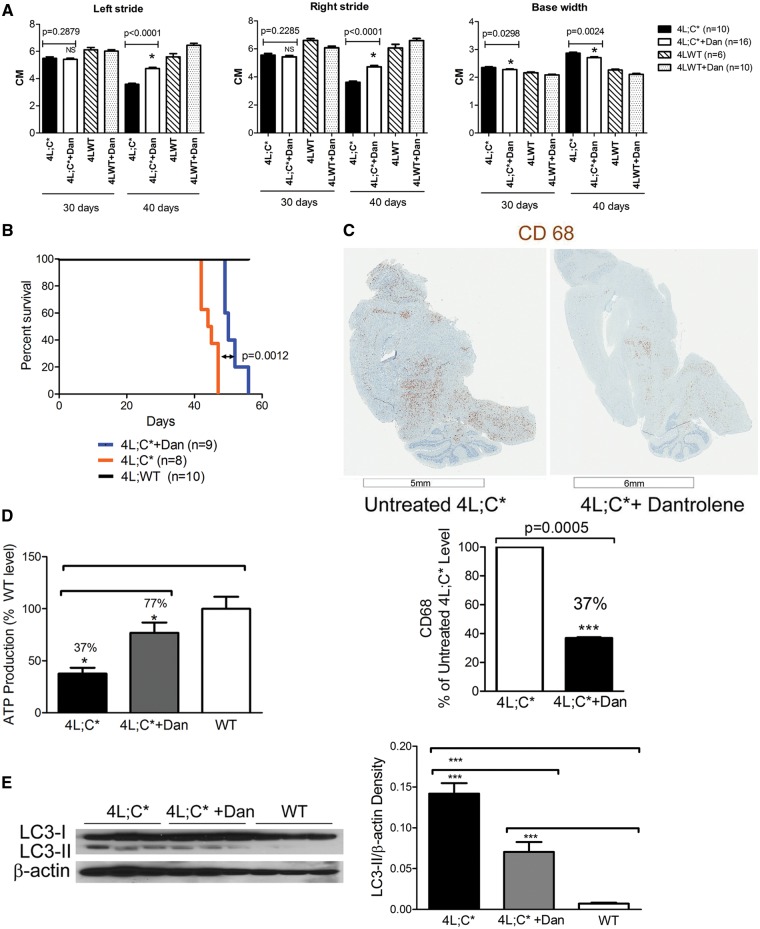Figure 3.
Dantrolene treatment in 4L;C* mice. (A) Gait analysis. Left stride (Left panel), right stride (Middle panel), base width (Right panel). The mice were subjected to two to three tests at 30 and 40 days of age. Dantrolene (Dan) treatment significantly increased left and right strides in 4L;C* mice at 40 days of age, and reduced base width at both 30 and 40 days of age compared to untreated 4L;C* mice. Littermate (4L;WT) mice that have no phenotype were used as normal controls in the analysis. Data were analysed by Student’s t-test. (B) Life span. The survival rate of dantrolene treated 4L;C* mice (blue) was significantly increased compared to untreated 4L;C* mice (orange). Median survival days is 50 days or 44 days for treated or untreated 4L;C* mice, respectively. The life span of dantrolene treated 4L;C* mice was prolonged by 12.3%. Littermate (4L;WT) control mice (black) had normal life span. Data are presented as Kaplan-Meier curve analysed by Mantel-Cox test. (C) CNS-inflammation. Positive CD68 staining (brown) in microglial cells indicate inflammation in 4L;C* brain. Compared to untreated 4L;C*, the CD68 signal was significantly reduced in dantrolene treated 4L;C* brains. The representative image for each group is shown. CD68 signal intensity in brain sections was quantitated by NIH image J and presented as % of untreated 4L;C* level. P-value was from Student’s t-test (n = 2–3 mice/group). (D) Mitochondrial ATP production rate. 4L;C* brain had 37% of ATP production rate (pmol/min/mg mitochondrial protein) compared to WT brains. Dantrolene treatment on 4L;C* mice improved ATP production to 77% of WT level. One-way ANOVA with post-hoc Tukey test (P < 0.05), n = 3 mice/group, 6 replicates/sample/assay, duplicate assays. (E) Immunoblot of LC3. LC3-II is barely detectable in WT brain. LC3-II levels were increased in 4L;C* cerebrum compared to WT. Dantrolene treated 4L;C* cerebrum showed significantly reduced level of LC3-II compared to untreated 4L;C*. One-way ANOVA with post-hoc Tukey test (P < 0.05), n = 3 mice/group, duplicate experiments.

